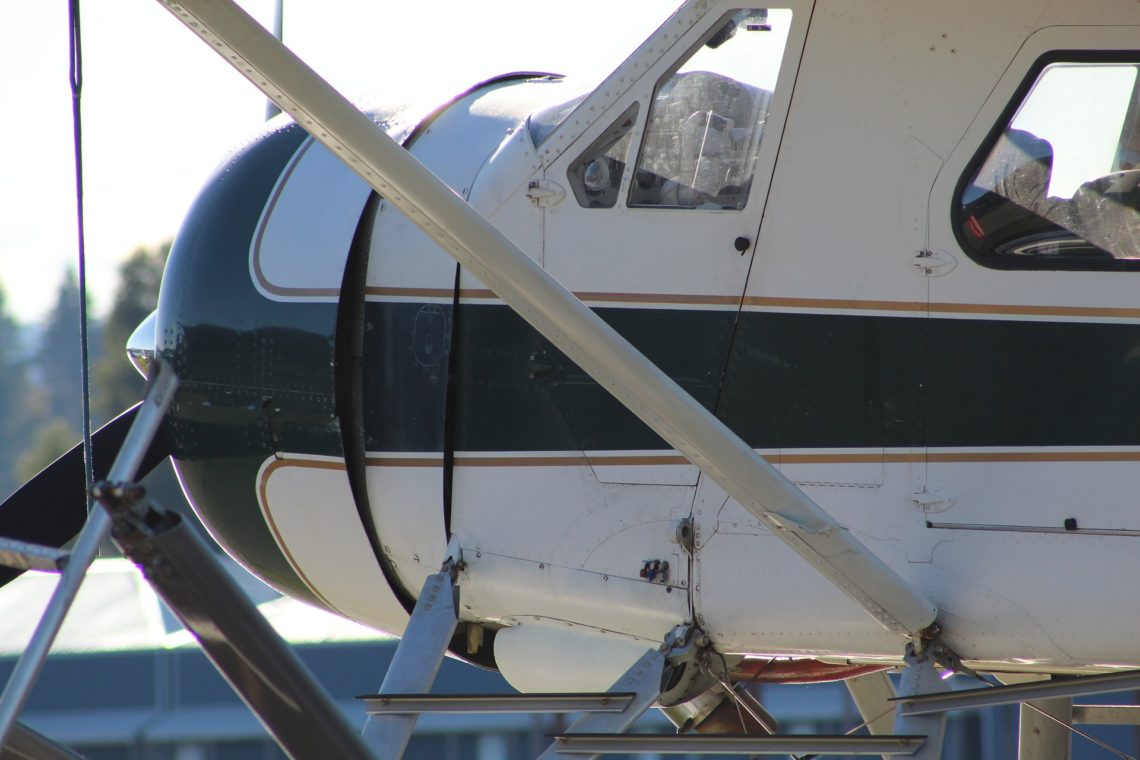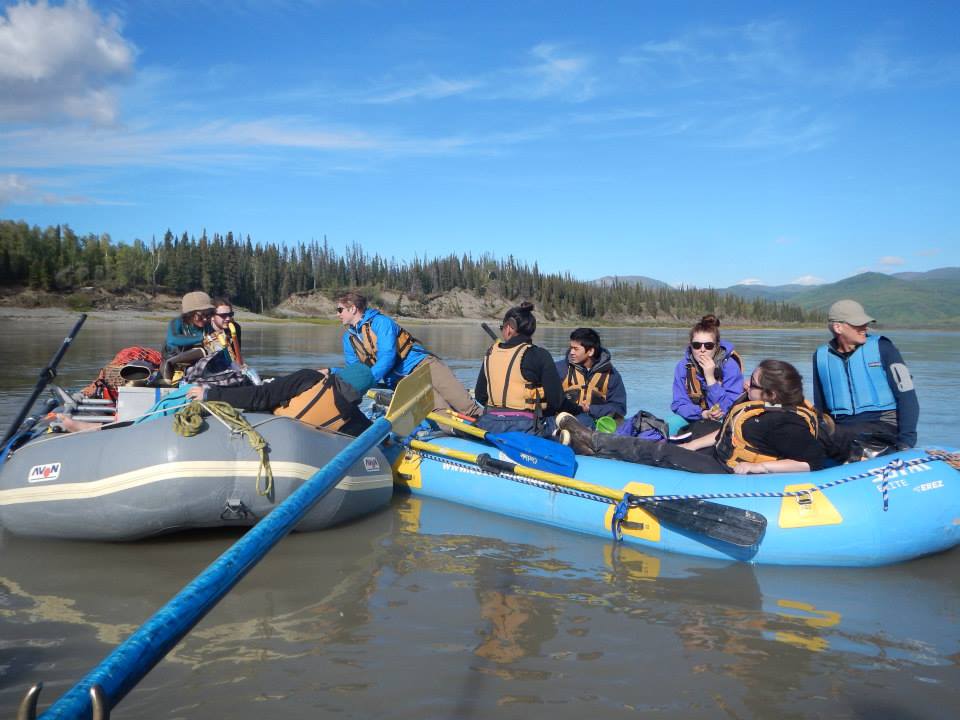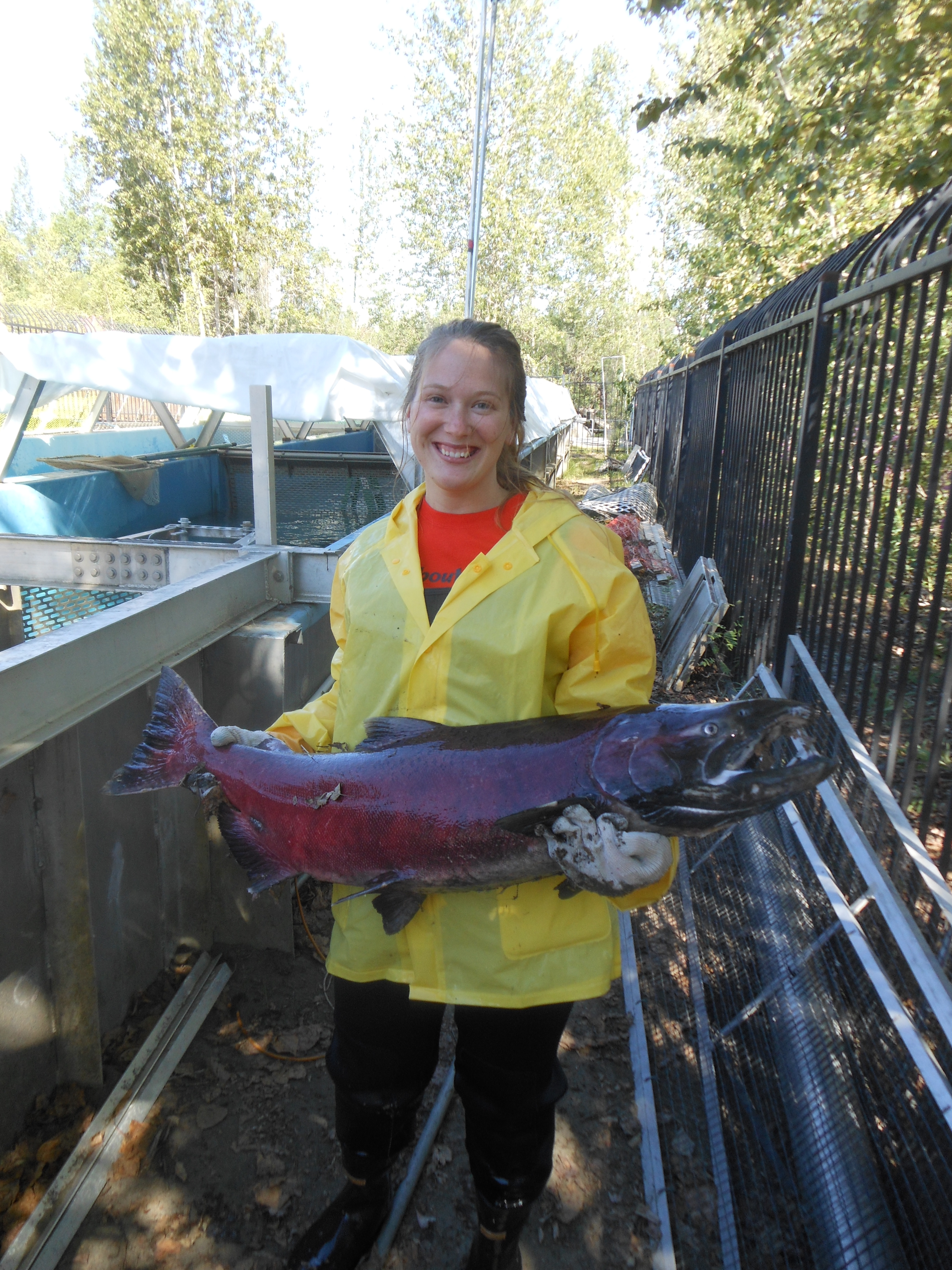by Julia Ditto
On my return trip from the Brooks Range, while traveling through Arctic Village, Alaska, I witnessed the arrival of the mail plane. Such an event could be seen as mundane in the average twenty-first century society; for me it was anything but. It was July 12, the last morning of a 42-day expedition for our group of four undergrads. Our remote experience in the Brooks Range contrasted with the sudden commotion at the Arctic Village airstrip. It is a memory that will never leave me.
“Alaska isn’t one place. It’s many places. You can’t really see all of Alaska,” our pilot Kirk Sweetser said, his voice cutting in through our headphones over the hum of his 1976 Cessna. Behind me sat Russell Wong, who looked out over the mountainous expanse of the Eastern Brooks Range. Below we could see our 360-mile route we had just completed. Our other team members, Ben Weissenbach and Duncan Wright, had taken the first of the two flights from our quiet camp at Joe Creek, and awaited our arrival in Arctic Village.
The plane crested over a ridge of mountains to reveal the shimmering Chandalar River. We followed the slow, meandering blue water southward, and within a few minutes we were approaching Arctic Village. After a month and a half in the wilderness, evidence of humans took me by surprise. From the air, ATV trails stood out like scars across the landscape. With one wide banked turn, Kirk effortlessly landed us smoothly on the gravel airstrip. It was no wonder why people called Kirk the best pilot in the Brooks Range.
Arctic Village is a small native village located in northeast Alaska, on the southern outskirts of the Eastern Brooks Range and 235 miles north of Fairbanks. As of 2010, there were 152 residents. Just south of town was the ‘airport’, which wasn’t more than a long swath of gravel, a shack, an outhouse, and a roofed tourist information booth. After Russell and I reunited with Ben and Duncan, we sat on the wooden deck of the booth waiting for our flight to Fairbanks. The mail plane, and our flight out, was to arrive at any non-specific time between 3 and 4:30 PM. The time then was around 2:30 PM.
The airstrip was nearly deserted. Besides our smelly selves, there was Kirk, and another pilot with a group of four pack-rafters. They too were in Arctic Village to catch the plane to Fairbanks. The two pilots departed, heading elsewhere in the great state of Alaska.
We waited and snacked on our little remaining food. All I had left from our last ration was a couple granola bars, a stick of jerky, and some berry scones we had baked on the fire the night before. As we ate, we exchanged trip stories with the four rafters.
It was both exciting and draining to interact with four strangers after our long escape from society. My skill in small talk had been discarded some 200 miles back on the trail. However, we enjoyed the other group’s company regardless of our sudden shyness. The wilderness is strange in that way; it breeds both reticence and social desire.
Just before 4 o’clock, a resident of Arctic Village drove up to the airstrip on a four-wheeler with her young son on her lap. Within another few minutes another resident arrived on a similar vehicle. Soon after, a couple arrived on foot.
It was then that we all heard the aircraft, a ten-seater Otter, approaching the airport for landing. The plane touched down and before the doors even opened, the airstrip was bustling with people. There were adults, children and elders. Their delightful voices filled the air with hasty excitement in both Gwitch’in and English. The crowd seemed to have come out of thin air, summoned by the sound of the aircraft.
A family stepped off the plane with suitcases and were greeted by relatives before being seated on various vehicles to return to the village. Then came the packages. Cartons of food, a bucket of ice cream, a bag of mail, and a stack of Amazon boxes, all of which were quickly sorted and whisked away on four-wheelers. A woman handed the pilot four green bags of aluminum cans to be sent back to Fairbanks for recycling.
Our group of four stood nearly motionless with our packs in the middle of the buzzing crowd, packages and boxes being passed overhead this way and that. I felt overwhelmed by the rush of people and could see the same in the eyes of my companions. Compared with the stillness of the wilderness, it felt like I was watching a time lapse of the whole event, as if the villagers were living in a world fast-forwarded.
“Thank you, Pilot!” we would hear over the rumble of vehicles as each drove off toward the village in a cloud of dust.
It was over as fast as it began. The villagers vanished, leaving us four, the group of rafters, and the pilot in the settling dust. We loaded our gear into the rear of the plane and took our final steps in what one would call “remote Alaska” as we boarded the Otter.
A bittersweet sadness clouded my thoughts as we took off for Fairbanks. Leaving the Brooks Range felt like I was leaving a part of myself behind. Kirk’s words replayed in my mind. “You can’t really see all of Alaska.” If I have to choose which parts I get to see, I am thankful to have gone to the Eastern Brooks Range. I am fortunate to have witnessed an afternoon of life in the arctic.






One Comment
kirsten
The writer had me missing seeing Alaska from up in the sky. She had me envisioning how the river curves around the landscape and its glistening beauty. Also how the sun light peaks over the range.